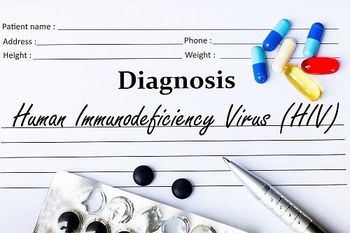
Iclaprim Shows Consistent, Potent Activity Against Beta-Hemolytic Streptococci
Investigators find iclaprim to be active against a worldwide collection of drug-susceptible and drug-resistant beta-hemolytic streptococci from patients with skin and skin structure infections.
Surveillance data collected before 2006 has shown that MotifBio’s iclaprim is active against beta-hemolytic pathogens, including pathogens that have developed resistance to available antibiotics.
Now, in a new study, investigators found that iclaprim demonstrated potent in vitro activity against drug-susceptible and drug-resistant beta-hemolytic streptococci collected from patients with skin and skin structure infections between 2012 and 2016.
The results were presented at the European Society of Clinical Microbiology and Infectious Diseases (ESCMID)/American Society for Microbiology (ASM) Conference on Drug Development to Meet the Challenge of Antimicrobial Resistance, which took place in Lisbon, Portugal, September 4-7, 2018.
Iclaprim is a diaminopyrimidine antibiotic that inhibits an essential bacterial enzyme referred to as dihydrofolate reductase (DHFR), which plays a critical role in the bacterial folate synthesis pathway. The treatment works in a way that differs from most antibiotics that are currently on the market in that it is able to quickly kill bacteria in vitro.
“It has a very unique mechanism of action where, in the future—and we can’t say conclusively, but it will look very difficult because of its 2 mechanisms—for resistance to occur,” William O’ Riordan, MD, FACP, chief medical officer of eStudySite, told Contagion® in a past
For the
To do this, the investigators performed antibacterial susceptibility testing by broth microdilution in accordance with the Clinical and Laboratory Standards Institute (CLSI) guidelines on a total of 458 non-duplicative, non-consecutive isolates—257 were Streptococcus pyogenes and 201 were Streptococcus agalactiae. The isolates were collected from several regions across the globe, including Europe (n=205), North America (204), Latin America (26), and Asia Pacific (23).
The investigators used
Iclaprim demonstrated consistent and potent activity against S pyogenes in isolates that were susceptible or resistant to erythromycin and azithromycin. Furthermore, investigators noted that MIC50 and MIC90 (µg/mL) values were higher for iclaprim in isolates that were tetracycline-resistant S pyogenes compared with tetracycline-susceptible isolates.
Iclaprim also proved to have consistent and potent activity against S agalactiae. The investigators report that MIC50 and MIC90 (µg/mL) values against drug-susceptible isolates were either identical or within 2-fold of those observed against erythromycin, azithromycin, and tetracycline-resistant isolates.
As such, the authors conclude that iclaprim demonstrated activity against a worldwide collection of drug-susceptible and -resistant beta-hemolytic streptococci collected from patients with skin and skin structure infections. With bacteria becoming increasingly resistant to available antibiotics, the need for more treatments with a low propensity for resistance development—such as iclaprim—are imperative.
“Continued surveillance is warranted to monitor the activity of iclaprim against beta-hemolytic streptococci,” the authors write, “as well as to detect any potential emergence of resistance.”
The US Food and Drug Administration accepted a
The approval was based on promising results yielded from 2 phase 3 trials—
Newsletter
Stay ahead of emerging infectious disease threats with expert insights and breaking research. Subscribe now to get updates delivered straight to your inbox.

















































































































































































































































































